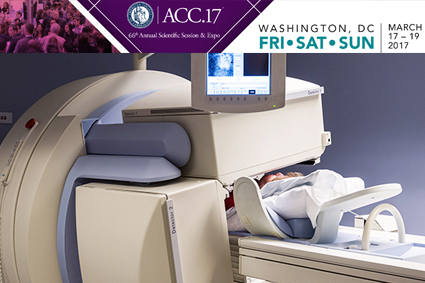
At one year, MACE rate (combination of all cause death, non-fatal infarction and target vessel revascularization) resulted 3.3% for MRI vs. 3.9% for fractional flow reserve (FFR) informed invasive strategy. This difference was not significant (p=0.62). Outcomes were similar, despite the lower revascularization rate in the MRI arm (36.0% vs. 44.2%; p= 0.0053).
Cardiovascular MR perfusion imaging could be considered the best non-invasive alternative available, since it provides information on anatomy, function and myocardial structure in one single study with no use of iodine radiation.
The study randomized 918 patients with chronic stable angina (functional class II or III) at intermediate to high risk of coronary artery disease justified by at least two cardiovascular risk factors and one positive exercise treadmill test. All patients received OMT for risk factor control.
The invasive group received angiography and FFR in all >2.5 mm arteries with 40% – 95% stenosis. Revascularization was performed when FFR value was ˂0.8.
We could conclude that non-invasive initial management of stable chronic angina with cardiovascular MRI was non-inferior to angiography with FFR at one year follow up.
Original Title: MR-INFORM: stress perfusion imaging to guide the management of patients with stable coronary artery disease.
Presenter: Nagel EC.
Subscribe to our weekly newsletter
Get the latest scientific articles on interventional cardiology
We are interested in your opinion. Please, leave your comments, thoughts, questions, etc., below. They will be most welcome.




